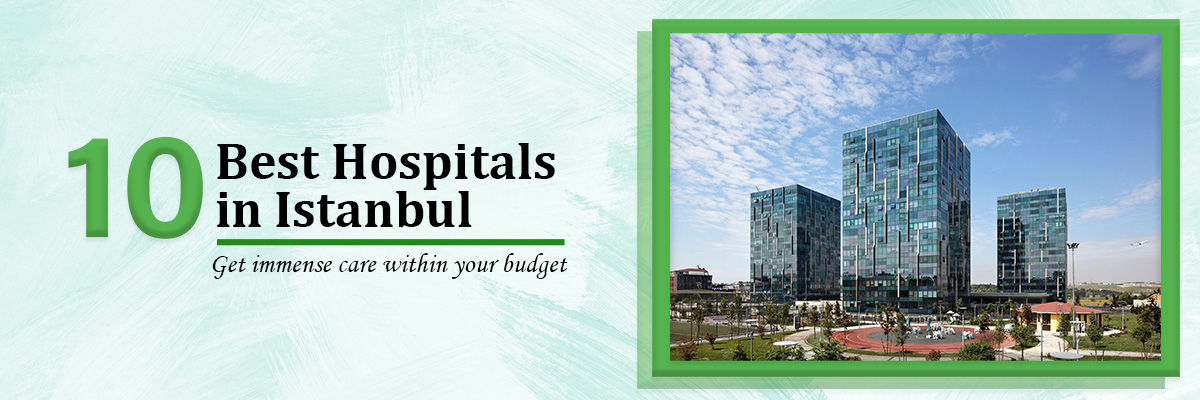Hair loss is a major problem caused by various factors like genetics, stress, medical conditions such as PCOS etc. But thanks to solutions like PRP, hair loss can now be effectively managed. Are you wondering what is PRP? PRP i.e. Platelet rich Plasma treatment for hair loss is an amazing method for hair restoration as it doesn’t require any operative procedure and gives successful result.
Platelet Rich Plasma (PRP) is a hair treatment procedure used for hair thinning or shedding of hair. It entails injecting platelet rich plasma extracted from our own blood cells all over the thinning part of the scalp.
Our blood contains red blood cells, white blood cells, plasma and platelets. Plasma carries blood cells and nutrients throughout the body.
Platelet Rich Plasma (PRP) formula has concentration of platelets from which red and white blood cells are removed.

The cost of PRP treatment varies from Rs 4500 ($64) to Rs 20,000 ($285) per session depending on different factors.
Such as:
Number of sessions required for PRP therapy
Depending on the area of the scalp to be treated by PRP treatment, the surgeon decides the number of sessions required for your treatment.
- In the first year, maximum 4 PRP sessions for treatment would be conducted.
- In subsequent years, 1-2 maintenance procedures of PRP will be conducted yearly as per the doctor’s opinion.
Are you eligible for PRP Hair Treatment?
- Your baldness level is of lesser grade that is Norwood level 1 or 2.
- Having hair thinning problem.
- If you are suffering from androgenic alopecia i.e., hair thinning that occurs along the top of the head.
- You are too young to receive hair transplant surgery and you have lesser level of baldness.
- You are not a heavy smoker or alcohol consumer.
- Further, you are not suffering from chronic diseases, liver disease, cancer, metabolic disorder and blood disorders.
Pre- Treatment medical tests
- Fasting plasma sugar- It is a method used to check for diabetes by measuring person’s blood sugar level after fasting for at least 8 hours.
- Liver function test- It is done to determine the health of your liver by measuring the levels of proteins, liver enzymes and bilirubin in your blood.
- Renal function test- Kidney function tests are common lab tests used to evaluate how well the kidneys are working.
- HbA1c- It is done to evaluate your average blood sugar level.
- Complete haemogram including platelet count- It is a blood test used to evaluate your overall health and detect a wide range of disorders as well as components and features of your blood.
- Anti-HIV- HIV antibody and HIV antigen (p24) testing is used to screen and diagnose HIV infections.
- Anti-Hepatitis C virus- It looks for antibodies to the hepatitis C virus.
- Anti-HBsAg- It is done to detect if you are infected with hepatitis B virus.
You might be wondering how does PRP exactly help?
- PRP for Androgenic alopecia: Androgenic alopecia is a progressive hair loss which occurs all over the scalp due to hormonal disturbances. PRP treated androgenic alopecia gives you results such as improved texture of hair as well as formation of new hair. Moreover, PRP treatment can be used along with FUE or FUT hair transplant, to cure androgenic alopecia.
- Alopecia Areata: It is a hair loss which forms circular bald patches all over the scalp. If you are suffering from AA, PRP is a safe treatment for you. PRP treatment increases hair growth while decreasing hair shedding. It doesn’t have much side effects as well. PRP can be used to treat patients who experience side effects due to steroid injections.
- Telogen effluvium: It is a type of hair fall which occurs because of stressful experience.
- You will see significant increase in the number of hair after sessions of PRP treatment. Hair follicles will become thicker and healthier.
- Cicatricial Alopecia: Cicatricial Alopecia is a scarring alopecia which means hair loss which happens along with scarring. The bald patches of Cicatricial Alopecia are not ideal for graft reception as there is poor passage of blood to the tissues. PRP is rich with growth factors such as IGF-1, PDGF, bFGF. PRP injections improve vascular (blood vessels) structure around hair follicles.
What to Expect in PRP therapy?
The doctor will gather information about your medical history, medications you take, diet and hair loss. After considering all these factors, he will suggest some medical tests such as blood tests, scalp biopsy, etc.
Our blood is made up of 2 parts i.e., solid and liquid. The liquid is called as plasma which contains proteins. The solid part contains White blood cells (WBCs), Red blood cells (RBCs) and Platelets
- White blood cells (WBCs): They are part of our immune system and helps our body to fight diseases.
- Red blood cells (RBCs): They carry oxygen from lungs to different parts of the body.
- Platelets: They help in blood clotting and repairs injuries.
PRP Procedure
- Step 1: Extracting the blood: Doctor draws blood from you. For this, larger bore needle is used to prevent damage to fragile red blood cells. He will draw approximately 7-30 ml of your blood sample depending on the area of your scalp to be treated.
- Step 2: Separation of platelets in centrifuge: Doctor draws blood from you. For this, larger bore needle is used to prevent damage to fragile red blood cells. He will draw approximately 7-30 ml of your blood sample depending on the area of your scalp to be treated.
- Step 3: Extract platelet rich plasma: The platelet rich plasma is extracted from the test tube with caution, so that the platelet poor plasma and red blood cells are not included in the solution. The growth factors in platelets rich plasma are activated.
- Step 4: Inject PRP: PRP formula is injected on every square cm over the area of thinning hair. Surgeon carefully decides the depth of injection with small sized needles.
- Step 5: Dermaroller treatment: Dermaroller is a device used for skin needling treatment which has many micro needles attached to it. Dermaroller is rolled over the skin of the scalp to make micro holes. It leads to skin repairing by production of collagen and elastin.
- Due to this, the PRP formula is absorbed quickly as micro channels are developed by injuries. This provokes platelets to activate growth factors and release them at injured site. This gives boost to hair follicles to produce new hair.
- Step 6: Low level laser therapy: After dermaroller treatment, you will undergo low level laser therapy by wearing laser cap over your scalp. The doctor will make you wear the laser cap for approximately 20 minutes. When PRP hair treatment is done along with LLLT, the outcome of PRP hair treatment will intensify.
What exactly are growth factors in PRP?
Within 10 minutes after activation of platelet rich plasma, platelets release the following growth factors:
- PDGF - Platelet derived growth factor
- IGF - Insulin-like Growth Factor
- FGF - Basic Fibroblast Growth Factor (b FGF)
- VEGF - Vascular Endothelial Growth Factor
- EGF - Epidermal Growth Factor
- HGF - Hepatocyte Growth Factor
- TGF-B - Transforming Growth Factor
So, how do growth factors help in hair regrowth?
| Growth Factors | Function |
| PDGF | Diverse group of cells produce platelet derived growth factor (PDGF) which is responsible for cell growth and reproduction of hair cells. PDGF maintains anagen phase (Growth phase) of the hair. |
| IGF-1 | It promotes hair growth by activating increased keratinocytes in hair follicles and prevents hair from going in catagen (regression) state. |
| FGF | Basic Fibroblast Growth Factor (b FGF) helps in shaft elongation of hair. It also increases hair growth. |
| VEGF | VEGF It increases the size of tissues surrounding a follicular vessel during growth phase of hair. |
| EGF | It simulates new blood vessels and increase the number of hair cells. |
| HGF | Simulates new blood vessels. |
| TGF-B | It produces new hair cells and regenerates hair growth. |
Things you should care after PRP treatment:
| Things to care for | Precaution |
| Mild swelling, bruising | Use ice packs to minimize it. |
| Dull- headedness, mild headache | 6-12 hours after the PRP treatment, you can take a painkiller by consulting your doctor. |
| Hair wash | Wash your hair 6-8 hours after your PRP therapy. Use lukewarm water to wash your hair. |
| Hair colouring | You can colour your hair 3 days after your PRP treatment. |
| Supplements | For at least a week after your PRP treatment, do not take blood thinners. |
| Diet | Avoid intake of caffeine, alcohol, multivitamins for 3 days after the PRP procedure. |
| Smoking | Refrain from using cigarettes for 3 days after PRP therapy. |
| Sun | Do not expose your scalp to the sun for the first 2 days after PRP treatment. You may wear hat while going out. |
What is the Recovery Time for PRP?
After any hair transplant procedure, there is a long recovery period. But here’s the catch.
There is hardly any recovery time required after PRP treatment as it is not a surgical procedure.
A person who has undergone a PRP treatment can resume his/her daily activities without any delay. You may experience a mild inflammation or redness of the scalp which will resolve in a few days.
- Use of medicines like minoxidil can be resumed from the next day after consulting the doctor.
- A person can even go to work from the next day onwards.
- You should not colour your hair for the next 72 hours (3 days) after the surgery.
- If you are undergoing any laser therapy treatments, you can also resume them from the next day itself.
PRP Side Effects
- You may experience heaviness of the head.
- You may feel pain on the scalp for a day.
- Calcification i.e., hardening of soft tissue due to abnormal deposition of calcium at injected points.
- In very rare cases, people may suffer from fever.
What are the Advantages of PRP treatment?
- Increases density of hair.
- Gives better texture to the hair.
- Reduction in the shedding of hair.
- As platelets are derived from your own blood and there is no addition of chemicals in them therefore it is safe to use.
- Recovery time is less.
- Non-surgical treatment with high efficacy.
- It can be used with stem cell therapy to increase the effectiveness of the treatment.


